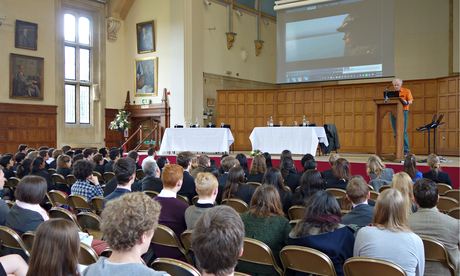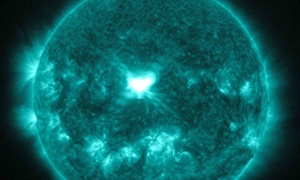Over the past couple of centuries we've got used to seeing the products of science all around us. You might not realise it but science communication is a vital part of our lives too. Without it, we would find it much harder to keep track of scientific developments, from pioneering medical treatments such as anaesthetics to our first manned mission to Mars. In fact, science communication is just as vital as science itself.
The Young Scientists Journal was set up in 2006 by Ghazwan Butrous, professor of cardiopulmonary sciences at the University of Kent, and Christina Astin, head of science at Kings School in Canterbury. It is a peer-reviewed, open-access journal and is designed to give young people, aged between 12 and 20, the opportunity to see their work published. As well as writing up their research, students are also free to submit articles about any science-related topic.
Last week, the Young Scientists Journal hosted its first ever Science & Communication Conference at the Kings School in Canterbury, for more than 100 budding scientists from across the UK. The main guest was Professor Sir Harry Kroto, who won a Nobel prize for his research into the football-shaped molecules made of 60 carbon atoms, better known as buckyballs or Buckminsterfullerene. Kroto spoke about his research and about thinking in an abstract, creative way to get around a problem, whether in research or science communication. Following Kroto's keynote speech, I gave a short presentation on the blogging I do for the journal.
The conference also featured a diverse range of workshops covering themes such as science journalism, "playing the media game" and how to use social media effectively to communicate science.
The workshops were led by special guests from industry and the media. Kroto ran a workshop on the Geoset project, an online collection of educational science videos and presentations he runs at the Florida State University. Other speakers at the workshops included New Scientist's environment reporter Michael Marshall, former presenter of Tomorrow's World Kate Bellingham and a team from the publishing arm of the Royal Society.
It was hard to decide which workshops to attend – they all sounded amazing. In the end, I plumped for two. The first workshop was about the psychology of science communication, run by Professor Averil MacDonald from the University of Reading, who discussed the assumptions you should and should not make when talking to a group of people or – equally – writing for different audiences. The second was run by Joanne Manaster from the University of Illinois, USA (@sciencegoddess on Twitter) and provided tips on how to get noticed as a scientist on the internet.
Aside from the chance to attend workshops and get advice from science communication experts, delegates also had the opportunity to submit their poster presentations to be considered for one of two £250 prizes. The two winners were Miss S M Sambavi, who had travelled all the way from India to attend the conference, and Mr Pratap Singh from the Perse School in Cambridge.
I have been blogging about science news stories for the Young Scientists Journal since June 2013. I also have my own blog, but this was my first experience of a real scientific conference. It was an amazing event. I learned a lot and came away thoroughly inspired, as I'm sure all the other delegates did.
Claire Nicholson is a 15-year-old science blogger. You can follow her on Twitter @Sci_Sparks where she tweets and posts about science news. Young scientists aged between 12 and 20 are encouraged to submit their work for publication to the Young Scientists Journal
















